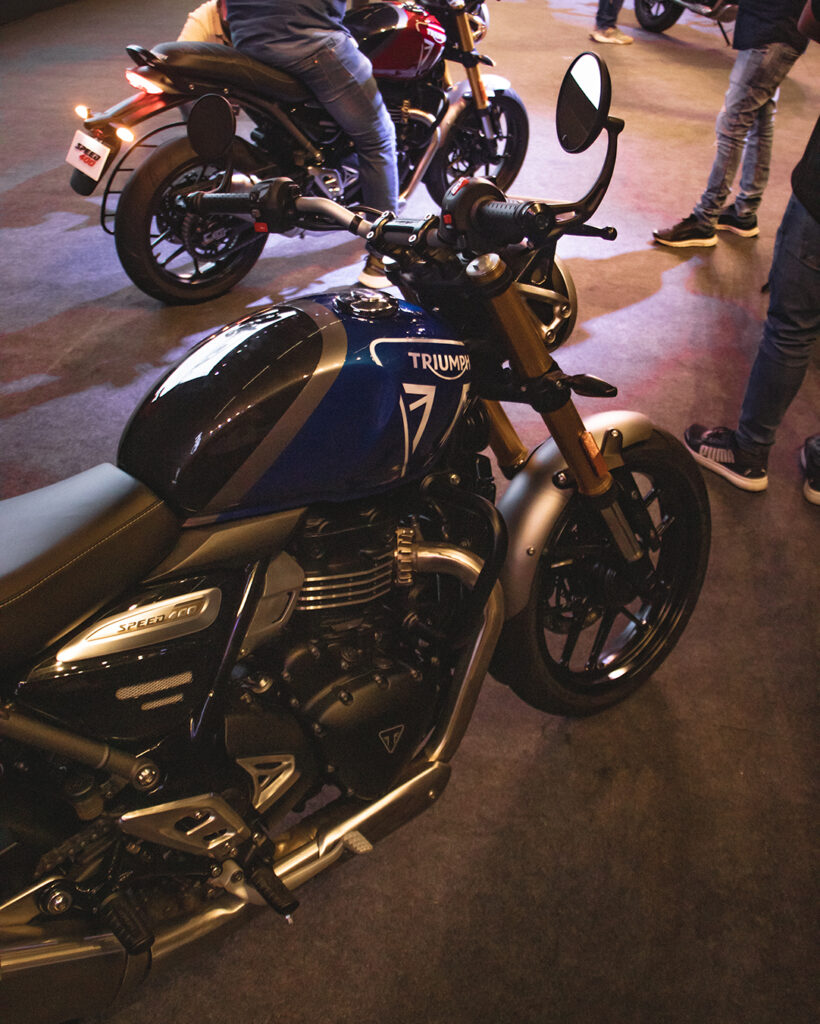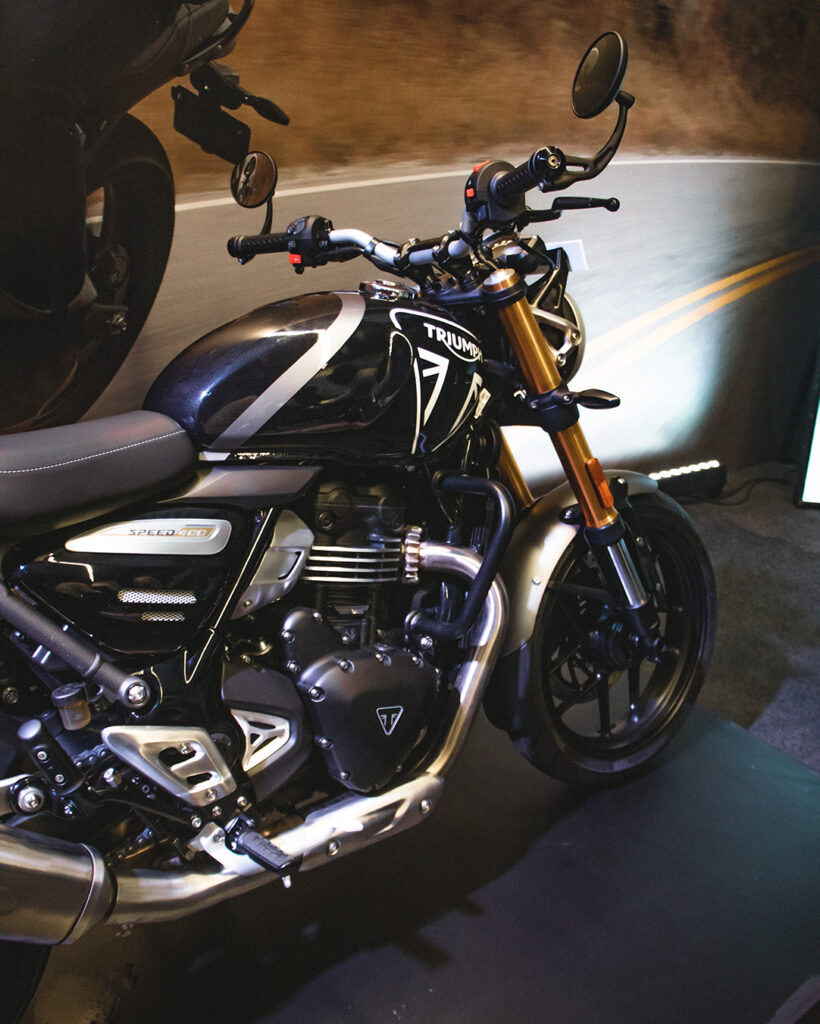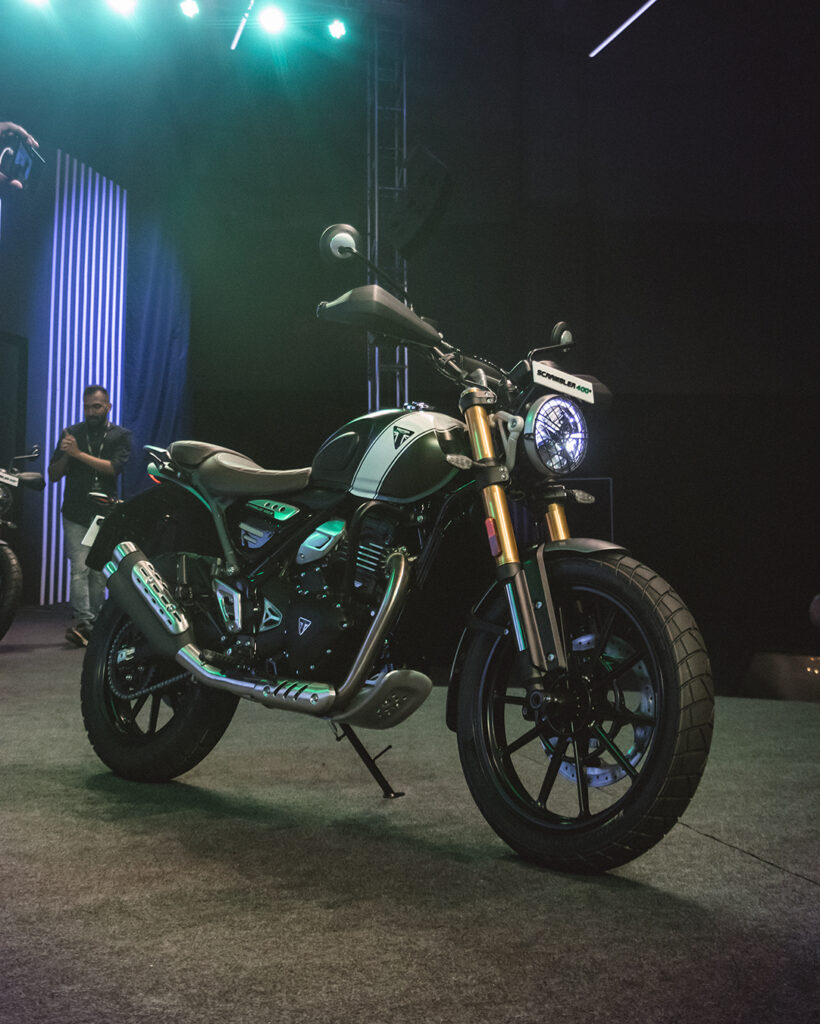Triumph, the iconic British motorcycle manufacturer has joined forces with Bajaj Auto in a joint venture and developed two products that promise to increase Triumph’s market share globally; namely the Triumph Scrambler 400 X and Triumph Speed 400. The Speed 400 has been launched at a jaw-dropping price of Rs. 2.33 lakh (ex-showroom Delhi) keen on taking the fiercest, most competitive segment globally; Is the Speed 400 the entry-level performance bike of choice?



The smallest displacement motorcycles to wear a Triumph badge will be built by Bajaj in India for the rest of the world. Both bikes draw on styling from their large displacement siblings with the Scrambler 400 X’s design themes has been derived from their respective larger displacement siblings, ie the Speed Twin 900 (the Street Twin) and the Scrambler 900. The 13-litre tank is rather compact considering the size of the motorcycle and the footpegs are set in a neutral position allowing room for movement whilst on the saddle, how is it going to fare in the real world? we will only find out once we get a hold of the bikes for a ride review!
Powering these motorcycles is an all-new single-cylinder block that Triumph has branded the TR-series. The liquid-cooled DOHC motor displaces 398cc with a rated output of 40bhp at 8,000rpm and 37.5Nm of torque at 6,500rpm. This does put both these motorcycles in contention with the likes of the KTM, which has traditionally dominated this segment in terms of performance. But the peak output rpms also gives us an idea of HOW this motor puts out power, with more power and torque available to the rider in the low-mid range trailing off towards the top of the rev range. Interestingly, while the Triumph’s 900cc motorcycles will still make do with their 5-speed gearbox, the TR-series will be paired with a 6-speed gearbox.



What is very interesting is the fact that Triumph has opted for authenticity over economies of scale, with both these bikes featuring a very distinct version of the hybrid spine/perimeter frame chassis, suspension and wheel sizes on both these bikes. The Speed 400 as logic dictates, has 17-inch wheels and gets wrapped in Metzeler M9RR rubber. While the Scrambler gets a 19-inch front and a 17-inch rear tyre with alloy wheels and Metzeler Karoo Street on/off-road tyres.
Both bikes, though are suspended between a 43mm big-piston fork and a mono-shock. The Scrambler does get more suspension travel than the Speed for obvious reasons. The Scrambler gets 150mm of travel, both at the front and the back, while the Speed drops lower by 10mm with 140mm of travel on the front and 130mm of travel on the rear.


The Scrambler also benefits from a bigger front brake with a 320mm disc as opposed to the 300mm disc on the Speed 400. This may be to account for the 9 extra kgs the Scrambler weighs as compared to the 170kg Speed 400. It’s also worth noting the weights are pretty low, for the segment.











